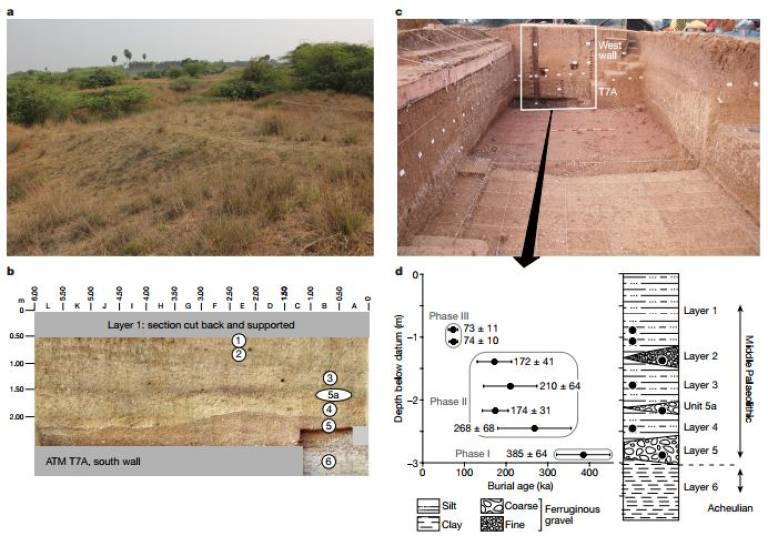Early Middle Palaeolithic culture in India around 385-172 ka reframes Out of Africa models
23 February 2018
Nature have published highly dubious claims about some Indian archaeological material which they claim is Middle Palaeolithic (dubious - images are so terrible it is hard to tell if Levallois is actually there, seems more like Late Acheulian) and that this somehow relates to dispersal out of Africa (highly unlikely - if it is Middle Palaeolithic, it is older than the MSA in Africa! And the Levant is in between and this does not fit the pattern there).
 Now let's see the media circus about how this, one again, 'CHANGES EVERYTHING'. It is cool that some Indian 'archaic' hominins had some core and flake technology, but it does not really change much in a big picture sense. Below is the abstract that defined the research.
Now let's see the media circus about how this, one again, 'CHANGES EVERYTHING'. It is cool that some Indian 'archaic' hominins had some core and flake technology, but it does not really change much in a big picture sense. Below is the abstract that defined the research.
Luminescence dating at the stratified prehistoric site of Attirampakkam, India, has shown that processes signifying the end of the Acheulian culture and the emergence of a Middle Palaeolithic culture occurred at 385 ± 64 thousand years ago (ka), much earlier than conventionally presumed for South Asia1. The Middle Palaeolithic continued at Attirampakkam until 172 ± 41 ka. Chronologies of Middle Palaeolithic technologies in regions distant from Africa and Europe are crucial for testing theories about the origins and early evolution of these cultures, and for understanding their association with modern humans or archaic hominins, their links with preceding Acheulian cultures and the spread of Levallois lithic technologies. The geographic location of India and its rich Middle Palaeolithic record are ideally suited to addressing these issues, but progress has been limited by the paucity of excavated sites and hominin fossils as well as by geochronological constraints. At Attirampakkam, the gradual disuse of bifaces, the predominance of small tools, the appearance of distinctive and diverse Levallois flake and point strategies, and the blade component all highlight a notable shift away from the preceding Acheulian large-flake technologies9. These findings document a process of substantial behavioural change that occurred in India at 385 ± 64 ka and establish its contemporaneity with similar processes recorded in Africa and Europe. This suggests complex interactions between local developments and ongoing global transformations. Together, these observations call for a re-evaluation of models that restrict the origins of Indian Middle Palaeolithic culture to the incidence of modern human dispersals after approximately 125 ka.
Early Middle Palaeolithic culture in India around 385-172 ka reframes Out of Africa models
Kumar Akhilesh, Shanti Pappa, Haresh M. Rajapara, Yanni Gunnel, Anil D. Shukl & Ashok K. Singhvi
DOI: 10.1038/nature25444
 Close
Close

